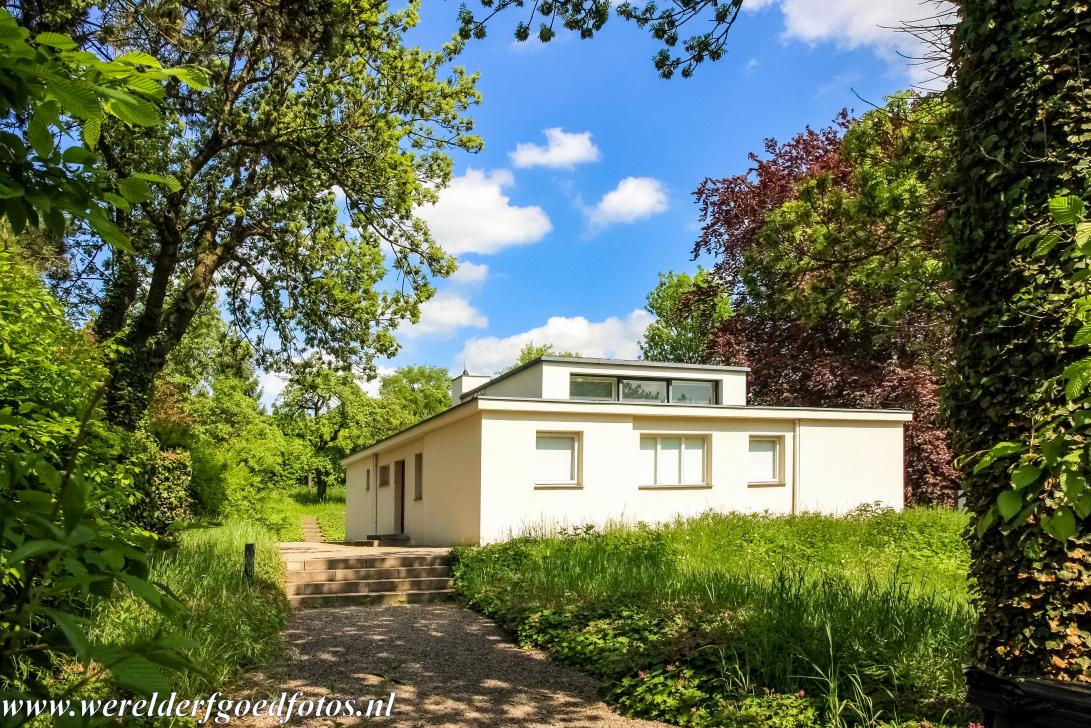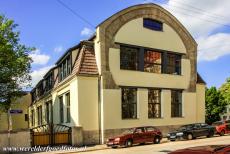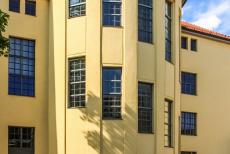Bauhaus and its Sites in Weimar: The Bauhaus School is commonly known as Das Bauhaus, the Bauhaus. The Bauhaus school was founded by Walter Gropius in Weimar. The Bauhaus school existed in three cities in Germany: Weimar (1919-1925), Dessau (1925-1932) and Berlin (1932-1933). The Bauhaus school was closed under pressure from the nazi regime in 1933. Its three architect-directors Walter Gropius, Hannes Meyer and Ludwig Mies van der Rohe are most closely associated with the Bauhaus. In the early 20th century, the Bauhaus created a revolution in art, design and architecture. the Bauhaus style became one of the most important influential currents in Modern Movement and architecture. The Haus am Horn is the first building of the Bauhaus ever constructed and the only one in Weimar. The Haus am Horn is an experimental residential house and was built as part of the first Bauhaus exhibition in 1923. The buildings of the Zeche Zollverein in Essen were erected in the Bauhaus style. The well known Dutch art movement De Stijl (The Style) greatly influenced the Bauhaus. The Bauhaus Museum Weimar offers insights into the design and development of the Bauhaus in Weimar. Another UNESCO World Heritage in Weimar: Classical Weimar. The Bauhaus and its Sites in Weimar and Dessau were declared a UNESCO World Heritage in 1996. World Heritage Art: Bauhaus Revisited and Ode aan het Bauhaus
www.werelderfgoedfotos.nl © Copyright World Heritage Photos

Bauhaus and its Sites in Weimar and Dessau: The Haus am Horn was designed by Georg Muche in 1923. The Haus am Horn is the first Bauhaus building ever constructed and is the only one in Weimar. The Haus am Horn has the shape of a cubic and was built of steel and concrete. Each room had specially designed furniture, created in the Bauhaus workshops. The Bauhaus and its Sites in Weimar and Dessau were declared a UNESCO World Heritage in 1996.

Bauhaus and its Sites in Weimar and Dessau: The Haus am Horn was designed by Georg Muche in 1923. The Haus am Horn is the first Bauhaus building ever constructed and is the only one in Weimar. The Haus am Horn has the shape of a cubic and was built of steel and concrete. Each room had specially designed furniture, created in the Bauhaus workshops. The Bauhaus and its Sites in Weimar and Dessau were declared a UNESCO World Heritage in 1996.

The Bauhaus Museum in Weimar. The objects in the museum illustrate the creative work of the Bauhaus. The museum houses works of Walter Gropius, the founder of the Bauhaus, as well as those of other famous Bauhaus masters such as Paul Klee and Gerhard Marcks. The Bauhaus Museum is located at the Theaterplatz in Weimar. The Bauhaus locations in Weimar are part of the UNESCO World Heritage: Bauhaus and its Sites in Weimar and Dessau.

Bauhaus and its Sites in Weimar and Dessau: The building of the Bauhaus University in Weimar was designed by the famous Belgian architect, designer and painter Henry van de Velde. The Bauhaus University in Weimar is the location where the Bauhaus, the Staatliches Bauhaus, was founded in 1919. The Bauhaus style created a revolution in art, design and architecture in the early 20th century. The Staatliches Bauhaus is commonly known as Das Bauhaus, the Bauhaus.

Bauhaus and its Sites in Weimar and Dessau: The former School of Arts and Crafts was designed by Henry van de Velde who also designed the renowned Kröller-Müller Museum near the Dutch city of Arnhem. The Art Nouveau building of the former School of Arts and Crafts is now part of the Bauhaus University in Weimar and situated close to the main building of the university. The building is the place where Walter Gropius founded the Staatliches Bauhaus, Das Bauhaus.

Bauhaus and its Sites in Weimar and Dessau: The Bauhaus University in Weimar. The Bauhaus school was founded by Walter Gropius in Weimar. The Bauhaus art school existed from 1919 to 1933, the Bauhaus moved from Weimar to Dessau in 1925 and was forced to move to Berlin in 1932. The Bauhaus was closed under pressure from the nazi regime in 1933. The Bauhaus style became one of the most important currents in modern design and architecture.

Bauhaus and its sites in Weimar: The Haus am Horn in Weimar is the first building the Bauhaus ever constructed, the Haus am Horn is located close to the Park an der Ilm and Goethe's garden house in Weimar. The Haus am Horn is part of the UNESCO World Heritage Site: Bauhaus and its Sites in Weimar and Dessau. Bauhaus and its Sites in Weimar and Dessau were inscribed on the UNESCO World Heritage List in 1996.
